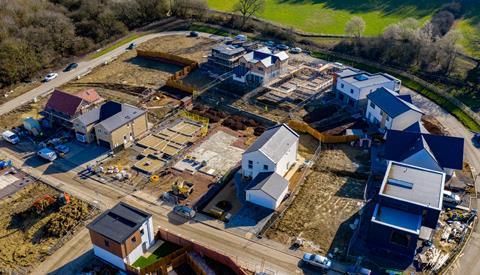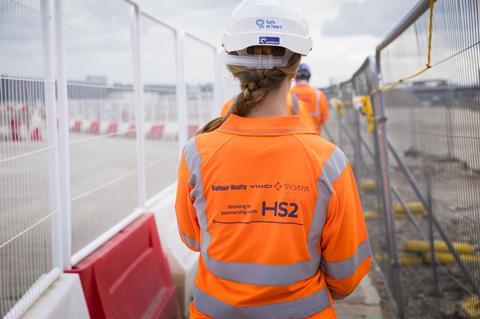Purchasing managers say existing build slowdown accelerated in March
Housebuilding activity fell at the fastest rate since the height of the covid lockdown in March, as rising borrowing costs led to a slowdown in building projects.
The latest S&P Global/CIPS UK purchasing managers survey published today found that housebuilding activity fell to an index score 44.2 last month – where any score below 50 represents decline in output – down from 47.4 in February.

The figure is the fourth straight month of declining output in the housebuilding sector a represents the lowest index score since May 20 in the midst of the first covid lockdown, which closed building sites across the country.
The survey report said purchasing manager’s had reported seeing fewer tender opportunities in March “due to rising borrowing costs and a subsequent slowdown in new house building projects”.
Construction output overall nevertheless managed a second successive month of growth in March, although the rate of expansion in the sector eased as the demand for residential work dropped off. The survey showed that construction growth overall edged above the 50 no-change mark, driven by a moderate increase in new orders and a strong performance from civil engineering. The month’s index score of 50.7 was down from 54.6 in February.
Despite the mothballing of the Euston station site last month, work on HS2 helped make civil engineering the fastest growing area (52.0) of construction in March.

Supply conditions improved but input prices continued to rise sharply attributed to elevated energy costs and rising staff wages.
The sharp drop in housebuilding activity came despite Halifax this morning reporting that house prices rose slightly this month - by 0.8% - echoing recent reports suggesting the housing market is performing better than expected so far this year.
The March rise in prices recorded by the mortgage lender put the average price of a home at £287,880, it said, and annual price inflation down to 1.6%, down from 2.1% last month.
The figures put Halifax at odds with rival lender the Nationwide, whose figures suggest prices are now 3.1% lower than a year ago.
Brian Berry, chief executive of the Federation of Master Builders said the decline in housebuilding activity shown by the purchasing managers index was worrying, and the government had no clear plan to increase housebuilding. He said: “It’s troubling that house building is the weakest-performing area within construction as the country is in the grips of a housing crisis, with smaller builders feeling the pinch on top of decline in their output over recent decades.”
“We need to see increased funding to local authority planning departments to help them take on and train more planning staff and a greatly simplified planning process to get homes out of planning purgatory”.
However, Max Jones, director in Lloyds Bank’s infrastructure and construction team, said that despite the dip in the reading, contractors were heading into the spring with “cautious optimism”.
“Industry leaders have naturally expressed disappointment about recent HS2 announcements and the impact on the sector’s pipeline, however, infrastructure continues to provide a healthy orderbook,” he said.
Meanwhile, a report from the Building Cost Information Service has said little or no growth in the next few years coupled with persistently high inflation will create stagflation.
It said labour would be the main cost driver in the near term with pay rises matching rates for self-employed labour.










No comments yet